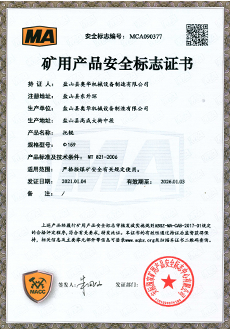 Afrikaans
Afrikaans  Albanian
Albanian  Amharic
Amharic  Arabic
Arabic  Armenian
Armenian  Azerbaijani
Azerbaijani  Basque
Basque  Belarusian
Belarusian  Bengali
Bengali  Bosnian
Bosnian  Bulgarian
Bulgarian  Catalan
Catalan  Cebuano
Cebuano  Corsican
Corsican  Croatian
Croatian  Czech
Czech  Danish
Danish  Dutch
Dutch  English
English  Esperanto
Esperanto  Estonian
Estonian  Finnish
Finnish  French
French  Frisian
Frisian  Galician
Galician  Georgian
Georgian  German
German  Greek
Greek  Gujarati
Gujarati  Haitian Creole
Haitian Creole  hausa
hausa  hawaiian
hawaiian  Hebrew
Hebrew  Hindi
Hindi  Miao
Miao  Hungarian
Hungarian  Icelandic
Icelandic  igbo
igbo  Indonesian
Indonesian  irish
irish  Italian
Italian  Japanese
Japanese  Javanese
Javanese  Kannada
Kannada  kazakh
kazakh  Khmer
Khmer  Rwandese
Rwandese  Korean
Korean  Kurdish
Kurdish  Kyrgyz
Kyrgyz  Lao
Lao  Latin
Latin  Latvian
Latvian  Lithuanian
Lithuanian  Luxembourgish
Luxembourgish  Macedonian
Macedonian  Malgashi
Malgashi  Malay
Malay  Malayalam
Malayalam  Maltese
Maltese  Maori
Maori  Marathi
Marathi  Mongolian
Mongolian  Myanmar
Myanmar  Nepali
Nepali  Norwegian
Norwegian  Norwegian
Norwegian  Occitan
Occitan  Pashto
Pashto  Persian
Persian  Polish
Polish  Portuguese
Portuguese  Punjabi
Punjabi  Romanian
Romanian  Russian
Russian  Samoan
Samoan  Scottish Gaelic
Scottish Gaelic  Serbian
Serbian  Sesotho
Sesotho  Shona
Shona  Sindhi
Sindhi  Sinhala
Sinhala  Slovak
Slovak  Slovenian
Slovenian  Somali
Somali  Spanish
Spanish  Sundanese
Sundanese  Swahili
Swahili  Swedish
Swedish  Tagalog
Tagalog  Tajik
Tajik  Tamil
Tamil  Tatar
Tatar  Telugu
Telugu  Thai
Thai  Turkish
Turkish  Turkmen
Turkmen  Ukrainian
Ukrainian  Urdu
Urdu  Uighur
Uighur  Uzbek
Uzbek  Vietnamese
Vietnamese  Welsh
Welsh  Bantu
Bantu  Yiddish
Yiddish  Yoruba
Yoruba  Zulu
Zulu conveyor system components
Understanding Conveyor System Components
Conveyor systems are integral to modern manufacturing and logistical operations, facilitating the movement of materials and products with efficiency and speed. These systems are designed to streamline processes, reduce labor costs, and enhance productivity. Understanding the key components of conveyor systems is essential for optimizing their performance and ensuring their reliability.
1. Conveyor Belts
At the heart of any conveyor system is the conveyor belt. Made from various materials such as rubber, plastic, or metal, the type of conveyor belt chosen depends on the specific application. For instance, rubber belts are typically used for heavy-duty applications due to their durability, while plastic belts are favored in industries requiring hygiene and sanitation, such as food processing.
2. Drive Motors
Drive motors are the powerhouse of conveyor systems. They provide the necessary torque to move the conveyor belt. Motors can either be AC or DC, with selection dependent on the desired speed and load. Variable frequency drives (VFDs) are often employed to control motor speed, allowing for flexibility in the system's operation, which is particularly useful in applications requiring varying speeds based on production needs.
Pulleys and rollers are mechanical components that support the belt and facilitate its movement. Pulleys, usually located at the ends of the conveyor, loop the belt around and help maintain its tension. Rollers, placed throughout the length of the conveyor, reduce friction and support the weight of the materials being transported, enhancing the efficiency of the system.
conveyor system components

4. Idlers
Idlers are a specific type of roller, typically placed in the return leg of the conveyor to support the belt and keep it in alignment. They play a crucial role in extending the life of the belt and ensuring smooth operation. Properly designed idlers can significantly reduce wear and tear, leading to lower maintenance costs over time.
5. Controls and Sensors
Modern conveyor systems are increasingly equipped with advanced control systems and sensors. These components can monitor various parameters such as speed, load, and belt alignment. Integrating sensors allows for real-time data collection, enabling operators to make informed decisions about system performance and maintenance needs. Additionally, automated controls can synchronize multiple conveyor systems, improving overall workflow.
6. Safety Features
Safety is paramount in any conveyor system design. Components such as emergency stop buttons, safety guards, and belt misalignment sensors are crucial for preventing accidents and ensuring the safety of operators. Regular maintenance and adherence to safety protocols further enhance the reliability and safety of the system.
Conclusion
In conclusion, the efficiency and reliability of conveyor systems hinge on their components. By understanding the function of key elements such as conveyor belts, drive motors, pulleys, rollers, idlers, controls, and safety features, businesses can optimize their operations. Investing in quality components and implementing regular maintenance will ensure that conveyor systems continue to enhance productivity and safety in industrial settings.
-
Revolutionizing Conveyor Reliability with Advanced Rubber Lagging PulleysNewsJul.22,2025
-
Powering Precision and Durability with Expert Manufacturers of Conveyor ComponentsNewsJul.22,2025
-
Optimizing Conveyor Systems with Advanced Conveyor AccessoriesNewsJul.22,2025
-
Maximize Conveyor Efficiency with Quality Conveyor Idler PulleysNewsJul.22,2025
-
Future-Proof Your Conveyor System with High-Performance Polyurethane RollerNewsJul.22,2025
-
Driving Efficiency Forward with Quality Idlers and RollersNewsJul.22,2025





























